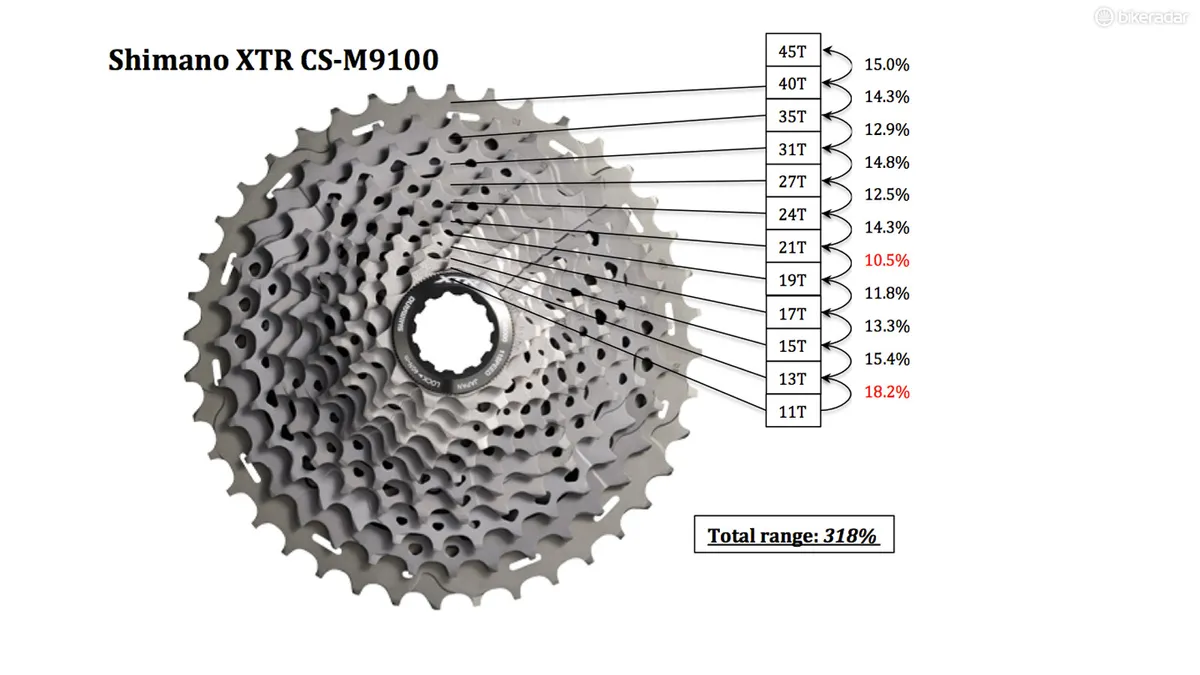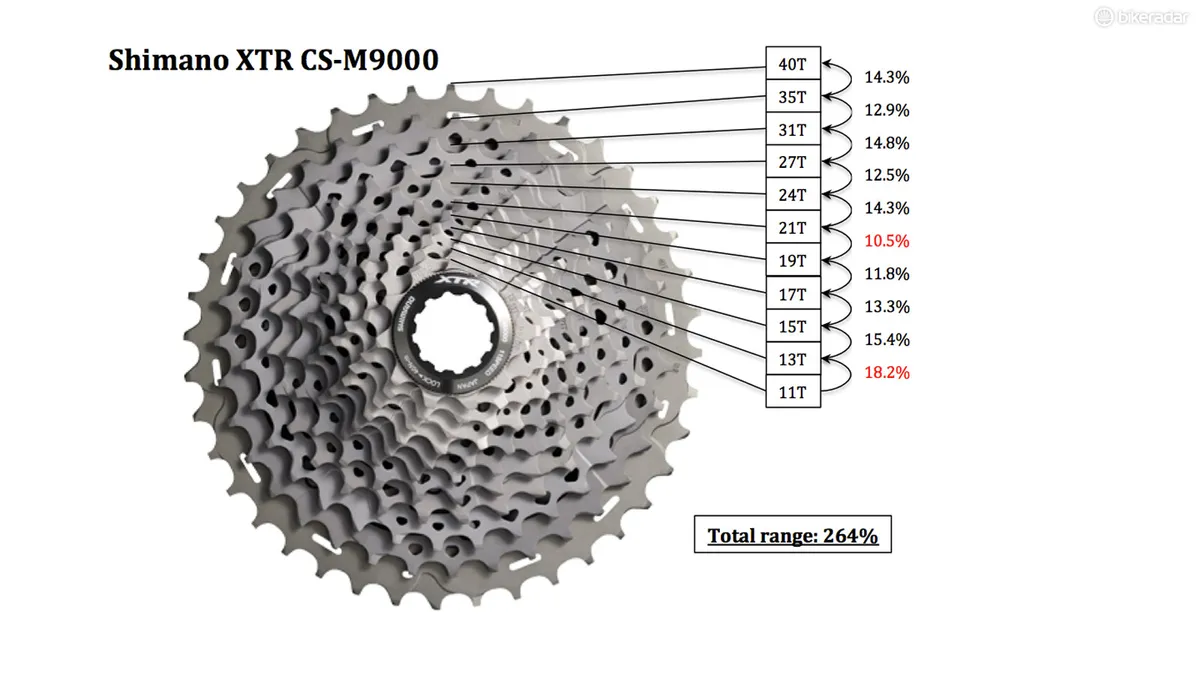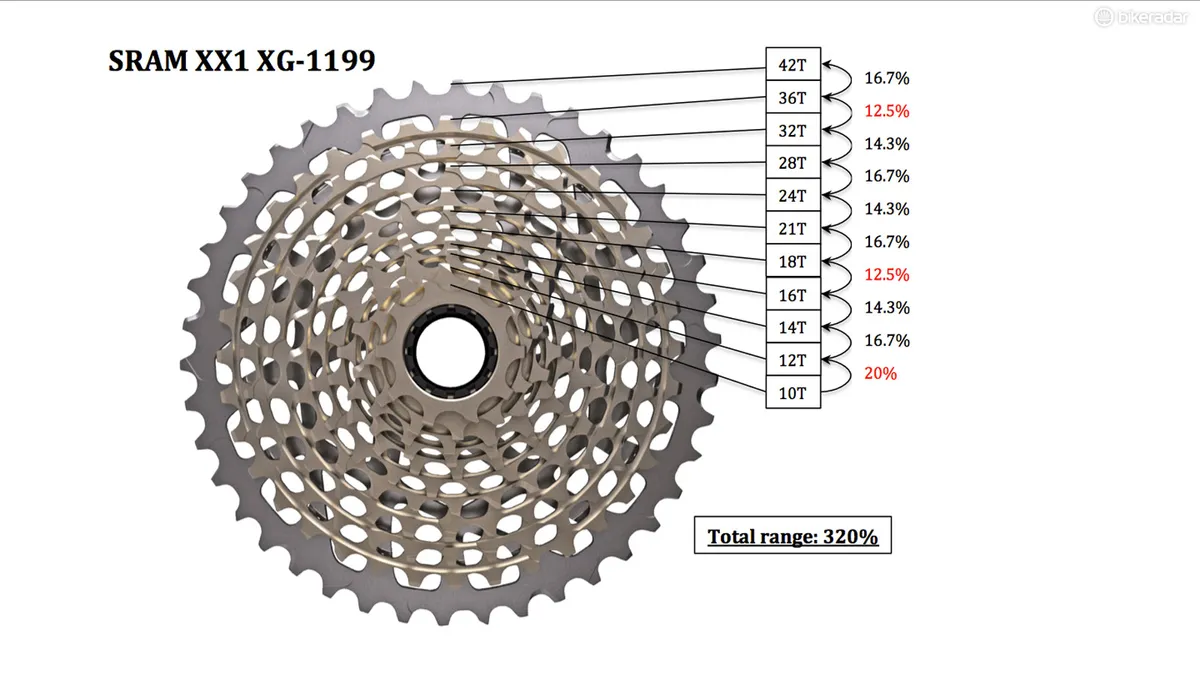Editor's note: this speculative article was published in 2015. We now have a clear view of what Shimano was working on. Read all the details about the development of Shimano's new XTR M9100 drivetrain here. For our impressions of this new group, read our XTR M9100 review.Read on to see what we got right and what items we didn't expect.
The ink on Shimano's new XTR M9000 and XTR Di2 M9050 box labels is barely dry but we've already starting thinking about what the next iteration of the company's flagship mountain bike groupset will bring.
Based on what we know about Shimano's engineering principles – not to mention one glaring competitive disadvantage – we strongly believe the next version will not only move to a wider-range 12-speed setup (twelve!) but might even be Di2-only.
It's all about range
Shimano undoubtedly has the best front shift performance in the mountain bike market. This is a bit of a moot point, though, given that enthusiast riders have been showing a strong preference toward single-ring drivetrains. For them, 1x setups offer better chain security and reduced complexity while frame engineers now have more flexibility in their designs since they no longer have to set aside precious real estate for a front derailleur.
In this context, even the latest XTR CS-M9000 cassette just can't compete with SRAM's XX1 for one simple reason: range.
Single-ring drivetrains are hardly new but SRAM was able to bring the technology to the masses thanks to the XX1 cassette's remarkably wide 10-42T spread and the generous 320-percent range that comes with it. Shimano has indeed narrowed that gap with the new XTR, moving from the previous 11-36T setup to a wider 11-40T. But even that still falls short with a 264-percent total range – essentially identical to XX1 if you omit the 42-tooth cog.
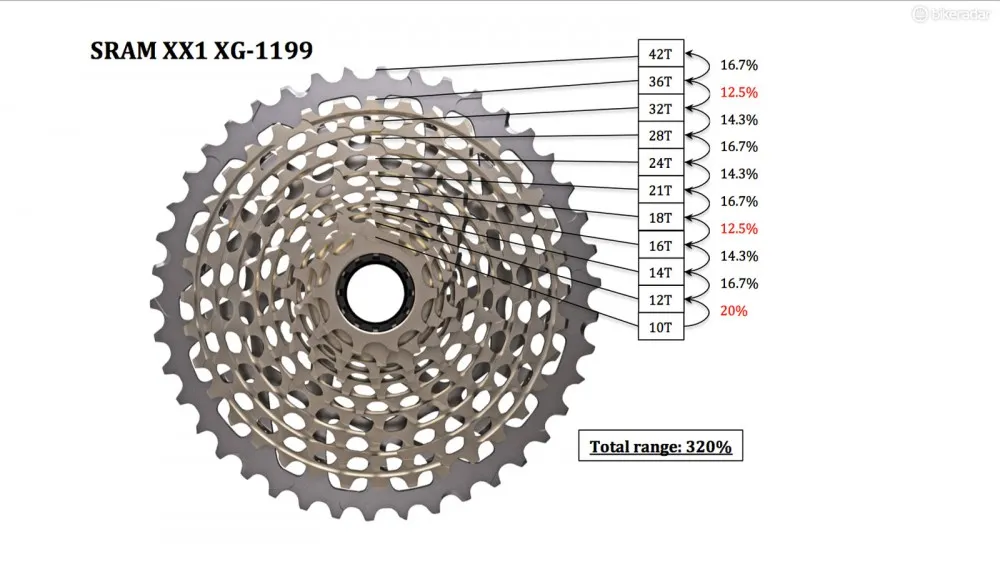
SRAM has essentially singlehandedly brought 1x mountain bike drivetrains to the masses, largely due to the impressive range of the XX1 cassette
For sure, Shimano probably could have debuted the latest version of XTR with a wider cassette to be more competitive in this respect, but doing so would have violated some key corporate engineering principles.
For one, Shimano is no big fan of huge gaps in gear ratios, which tend to overly disrupt a rider's pedaling cadence. On average, XX1 averages 15.45 percent ratio jumps between each cog with a maximum gap of 20 percent and a minimum of 12.5. XTR, on the other hand, averages a noticeably tighter 13.8 percent and with much smaller extremes of 18.2 and 10.5 percent. Shimano so strongly believes in this principle that it's even come up with a catchy tagline for it – Rhythm Step – and, as kitschy as that might sound, those smaller gaps are noticeable.
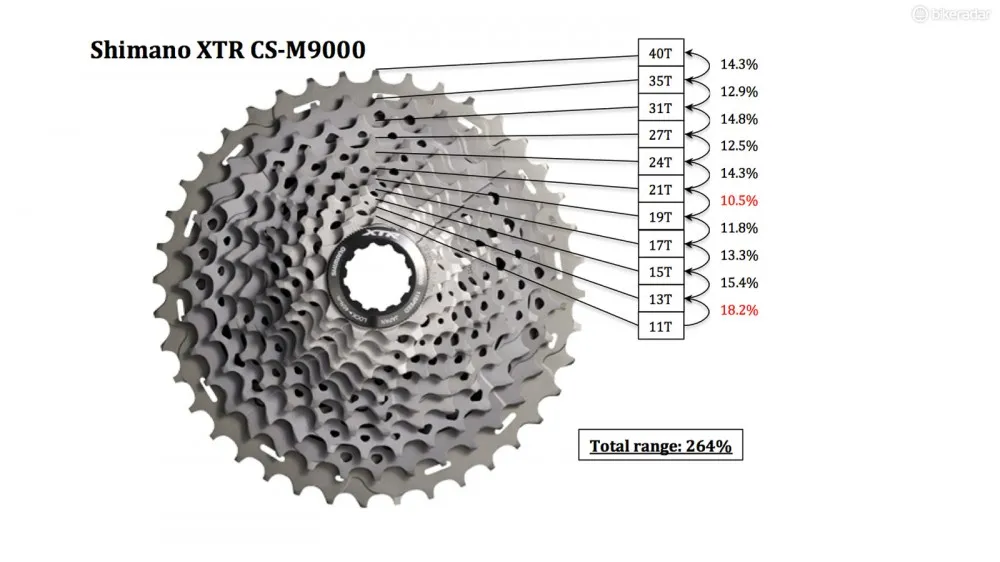
Shimano has increased the total gear range on the latest XTR M9000 cassette but by keeping the jumps in between gears relatively low, the total range is lower than XX1
Matching SRAM's tiny 10-tooth cog would thus not only produce bigger jumps than Shimano's engineers would prefer; it would also render obsolete an enormous legacy of compatible wheels since an 11-tooth cog is the smallest that will fit on a standard freehub body.
With all of this in mind, we believe Shimano's ultimate solution will be (cue the drum roll) to add yet another cog.
Why 12-speed?
Adding a 45T or 46T cog to the existing XTR ratios would make the total range 309 or 318 percent, respectively, which would be far more competitive with SRAM XX1's 320 percent total spread while also retaining Shimano's preferred narrower ratio gaps. We believe that Shimano would be able to do so on the same freehub body dimensions currently in use, too.
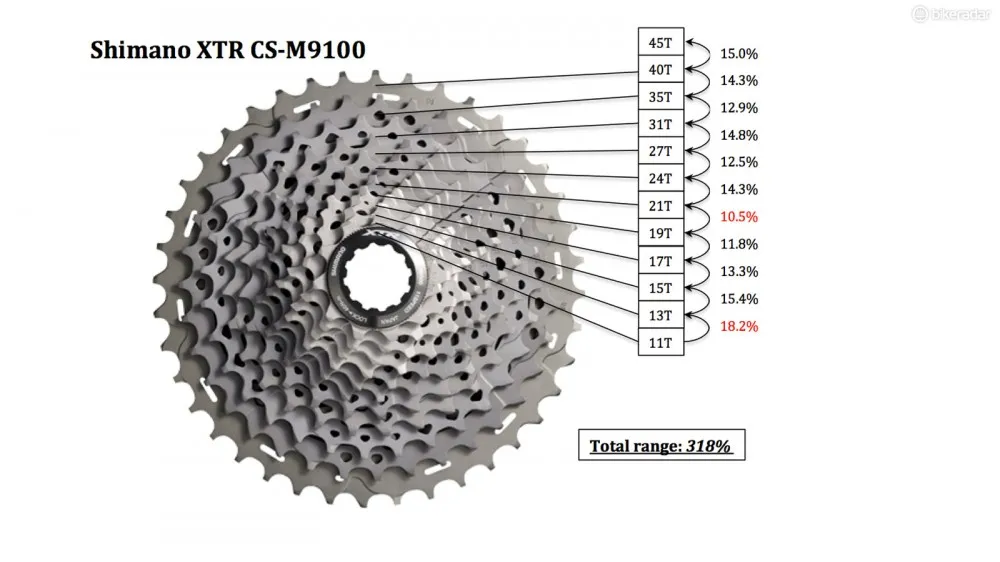
Shimano could equal the range of XX1 while still maintaining relatively small jumps in between gears by adding a twelfth cog
Although it's likely that a 12-speed mountain bike drivetrain would result in still-narrower chains and cogs, the actual change may not be as bad as you might think. Both SRAM and Shimano have already demonstrated that you can cantilever bigger cogs out over the driveside spoke flange, effectively allowing more cogs to fit on to the same width freehub body that once held only eight. A huge 45- or 46-tooth cog would take advantage of a wheel's inherent spoke angle even further, thus maintaining wheel strength while potentially narrowing the associated chain and cassette cogs only slightly.
We have little doubt that Shimano's deep engineering resources could figure out a way to do all of this with a cable-based system, but we think there's at least some possibility that such a 12-speed drivetrain just might be restricted to the company's flagship Di2 electronic platform.
As good as modern cable-actuated systems have become, there are limits to how much precision you can extract. After all, you're taking what is ultimately a very small movement at the shift lever and trying to faithfully translate that command through nearly a meter of braided stainless steel cable into a similarly small movement at the other end. Even if it's possible in theory, the realities of everyday wear and tear would begin degrading that precision the second treads bite into dirt.
Di2's advantage, meanwhile, has always been in the way it perfectly turns inputs at the lever into outputs at the derailleur with no worries about cable and housing contamination, housing compression, or sloppy routing paths – it's just electrons in, electrons out. Provided the derailleur is mounted to a sufficiently solid foundation such as Shimano's direct-mount hanger standard, it'd be easy to turn a convert a current 11-speed Di2 setup into a 12-speed one (at least in theory). And from a hardware perspective, Shimano engineers would only have to come up with a new cassette, chain, derailleur pulleys, and a handful of chainring sizes.
Even better, we'd guess that all of the above would only add about 60g in total to the current 11-speed XTR group.
Will our predictions ring true whenever Shimano decides to launch the next generation of XTR? We don't know and in fairness, have no corroborating evidence to support these claims. But what we've outlined here certainly seems like a logical and natural next step – and if nothing else, Shimano is all about being logical. Speaking of which, Shimano has historically adhered to a three-year product cycle for groupsets – so even if our guesses are correct, this isn't likely to see the light of day until model year 2018.

